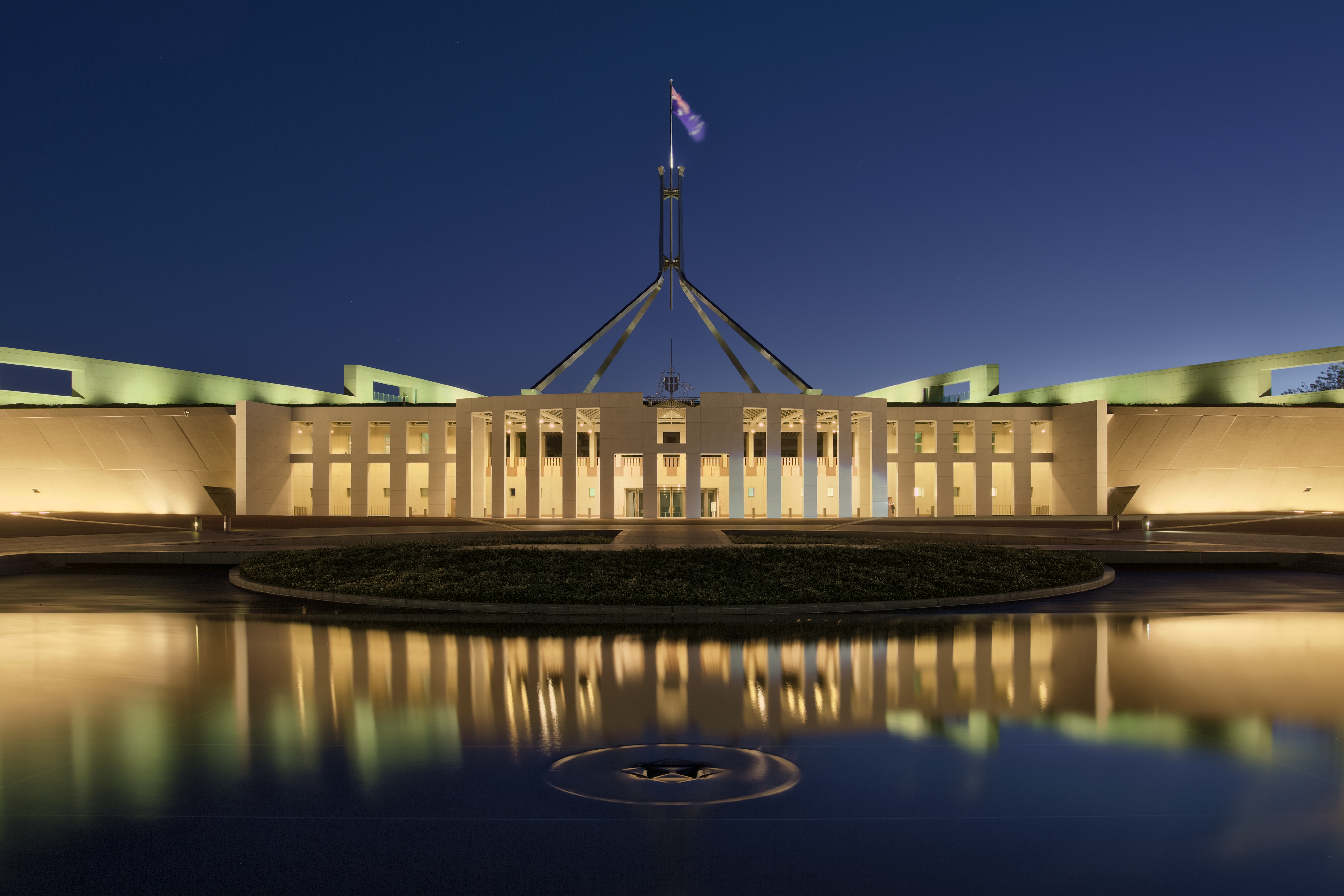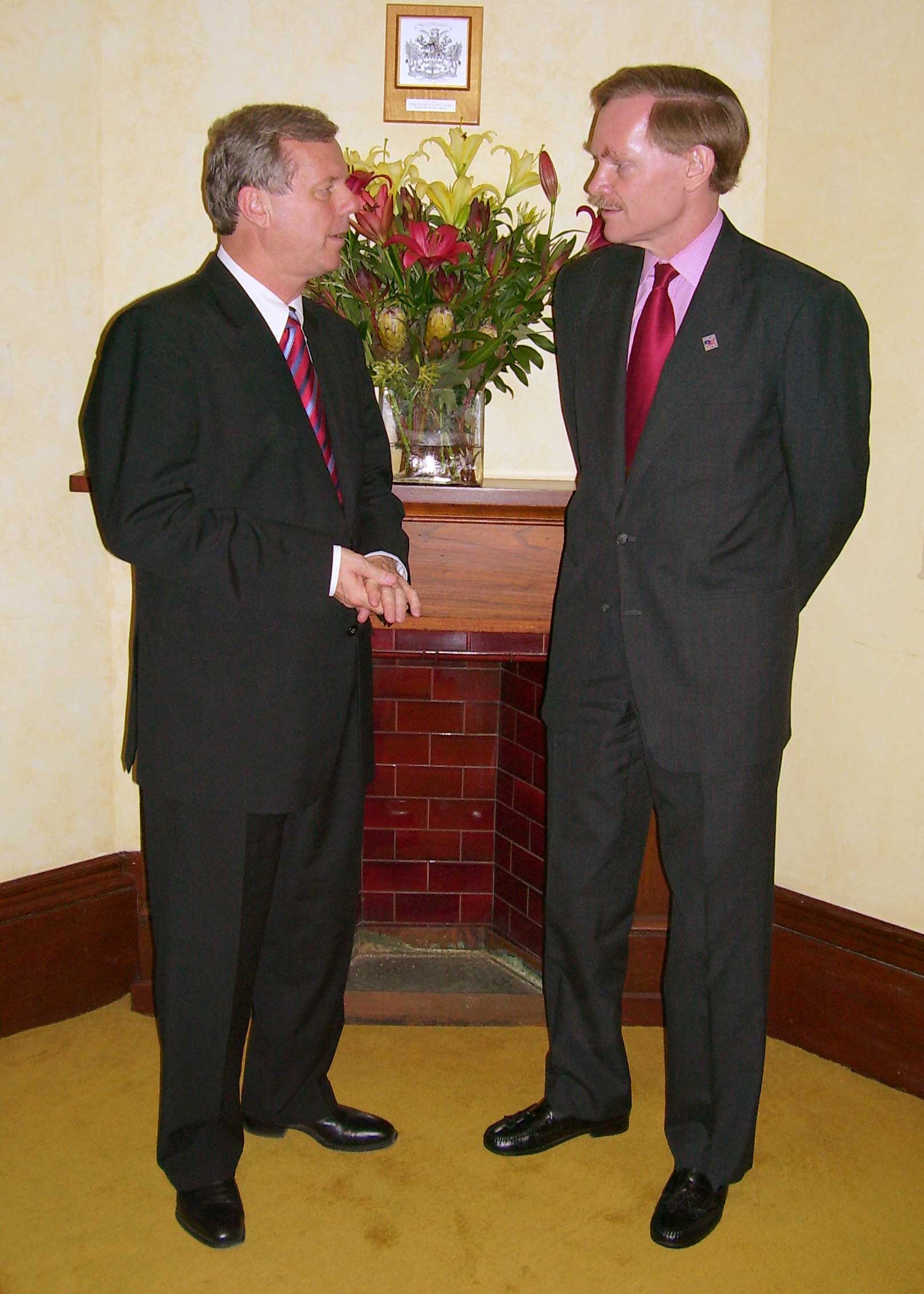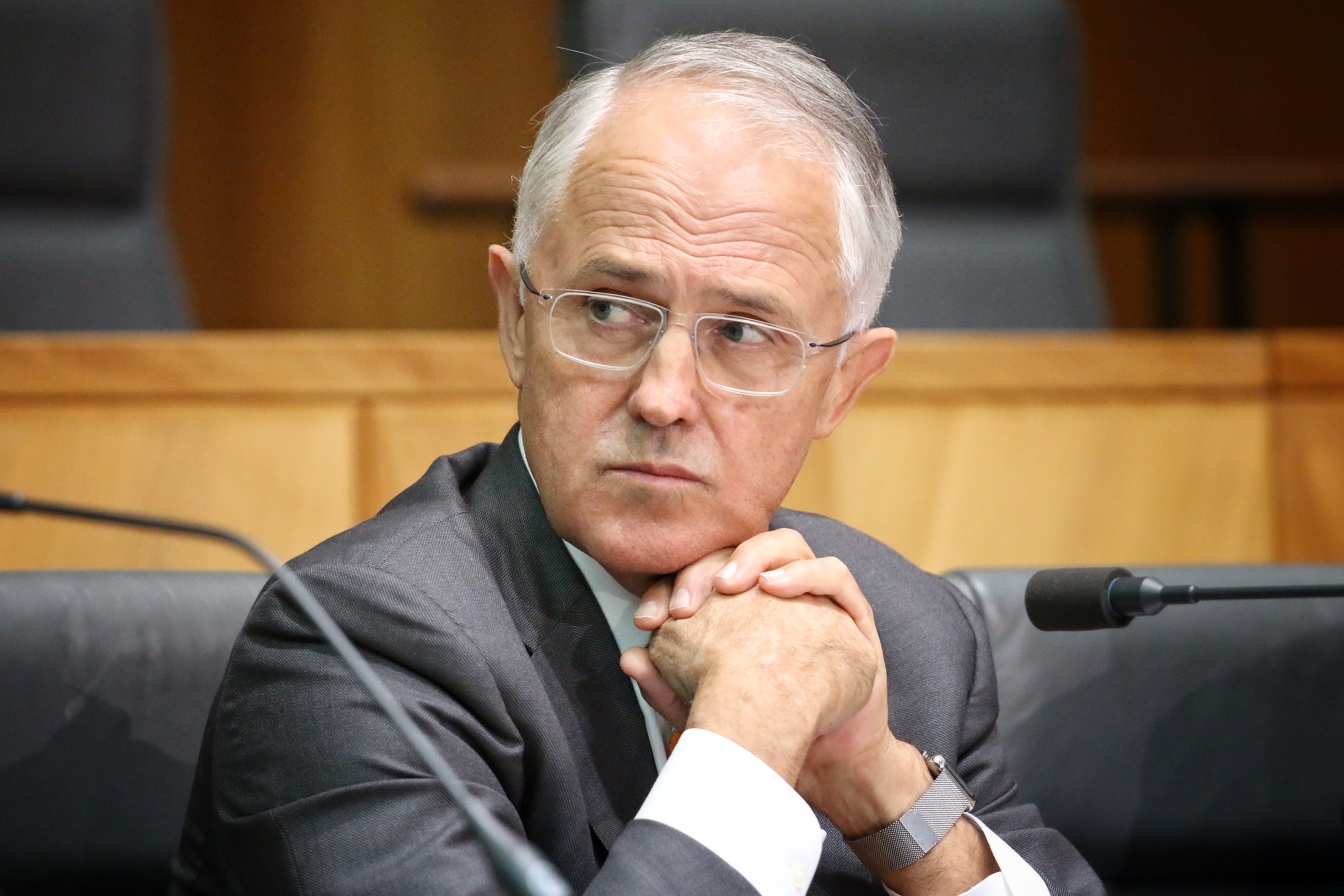|
Premier (Australia)
The premiers and chief ministers of the Australian states and territories are the heads of the executive governments in the six states and two self-governing territories of Australia. They perform the same function at the state and territory level as the Prime Minister of Australia performs at the national level. The King of Australia and the state governors are the formal repositories of executive power; however, in practice they act only on the advice of state premiers and ministers except in extreme circumstances, such as a constitutional crisis. Background Each of the Australian states is governed under the Westminster system of parliamentary government. Each state has an elected legislature. Following a general election, the state governor appoints as premier the member of the lower house of the state legislature who can command a simple majority of votes on the floor of the house. The governor is the head of state, and acts only on the advice of the head of governmen ... [...More Info...] [...Related Items...] OR: [Wikipedia] [Google] [Baidu] |
Head Of Government
The head of government is the highest or the second-highest official in the executive branch of a sovereign state, a federated state, or a self-governing colony, autonomous region, or other government who often presides over a cabinet, a group of ministers or secretaries who lead executive departments. In diplomacy, "head of government" is differentiated from "head of state"HEADS OF STATE, HEADS OF GOVERNMENT, MINISTERS FOR FOREIGN AFFAIRS , Protocol and Liaison Service, United Nations (19 October 2012). Retrieved 29 July 2013. although in some countries, for example the United States, they are the same person. The authority of a head of government, such as a president, chancellor, or prime minister and the relationship between that position and other state institut ... [...More Info...] [...Related Items...] OR: [Wikipedia] [Google] [Baidu] |
Politics Of Australia
The politics of Australia take place within the framework of a federal parliamentary constitutional monarchy. Australia has maintained a stable liberal democratic political system under its Constitution, one of the world's oldest, since Federation in 1901. Australia is the world's sixth oldest continuous democracy and largely operates as a two-party system in which voting is compulsory. Australia is also a federation, where power is divided between the federal government and the states and territories. The federal government is separated into three branches: File:Au_gov_chart.svg, center, 640px, Structure of the Government of Australia, alt=A high level diagram of the structure of the Government of Australia, the three branches, legislative, executive, and judicial. rect 575 6 1175 56 Constitution of Australia rect 575 191 1175 241 Governor General of Australia rect 125 341 425 391 Legislative Branch rect 725 341 1025 391 Executive Branch rect 1325 341 1625 391 Jud ... [...More Info...] [...Related Items...] OR: [Wikipedia] [Google] [Baidu] |
Rob Kerin
Robert Gerard Kerin (born 4 January 1954) is a former South Australian politician who was the Premier of South Australia from 22 October 2001 to 5 March 2002, representing the South Australian Division of the Liberal Party of Australia. He was also Deputy Premier of South Australia from 7 July 1998 until he became Premier and, after losing government, leader of the opposition until after the 2006 election. Early life Born to parents Maurice and Molly Kerin in Crystal Brook, Kerin attended the Adelaide Catholic secondary school, Sacred Heart College Senior. Parliament Kerin was elected to parliament in 1993 as the member for the mid-north rural electoral district of Frome. Between 1995 and 2001 he held various ministries in the Brown and Olsen governments: Primary Industries, Natural Resources and Regional Development, Minerals and Energy, State Development, Tourism and Multicultural Affairs. Following the resignation of Deputy Premier Graham Ingerson in 1998, Kerin succeed ... [...More Info...] [...Related Items...] OR: [Wikipedia] [Google] [Baidu] |
Mike Rann
Michael David Rann, , (born 5 January 1953) is an Australian former politician who was the 44th premier of South Australia from 2002 to 2011. He was later Australian High Commissioner to the United Kingdom from 2013 to 2014, and Australian ambassador to Italy, Albania, Libya and San Marino from 2014 to 2016. Rann grew up in the United Kingdom and New Zealand, completing a Bachelor and Master of Arts in political science at the University of Auckland. Before entering Parliament, Rann worked as an advisor to South Australian Labor Parliamentarians. Rann became leader of the South Australian Branch of the Australian Labor Party and South Australian Leader of the Opposition in 1994 and led the party to minority government at the 2002 election. He resigned as Premier in October 2011 and was succeeded by Jay Weatherill. Rann is the third- longest serving Premier of South Australia behind Thomas Playford IV and John Bannon and served a record 17 years as South Australian Labor pa ... [...More Info...] [...Related Items...] OR: [Wikipedia] [Google] [Baidu] |
Council For The Australian Federation
The Council for the Australian Federation (CAF) was established on 6 October 2006. The group seeks to promote and enhance the federal system of government in Australia and comprises Premiers and Chief Ministers of all Australian states and territories. The idea for the Council was originally advocated by the former Victorian Premier Steve Bracks and former South Australian Premier Mike Rann. They had been impressed by a meeting of Canada's Council of the Federation chaired by Quebec's Premier Jean Charest which they attended, along with Queensland's Anna Bligh, in Montreal earlier in 2006. Rann became the inaugural Chair. In its February 2007 meeting it issued the CAF Declaration on Climate Change. It undertook substantial policy work and modelling on emissions trading and in April 2007 CAF commissioned eminent Australian academic Professor Ross Garnaut to review the likely impact of climate change on the Australian economy and to make recommendations on medium and ... [...More Info...] [...Related Items...] OR: [Wikipedia] [Google] [Baidu] |
National Cabinet (Australia)
National Cabinet is the Australian intergovernmental decision-making forum composed of the prime minister and state and territory premiers and chief ministers. Originally established on 13 March 2020 in response to the COVID-19 pandemic, National Cabinet replaced the now-defunct Council of Australian Governments (COAG) as the primary intergovernmental forum on 29 May 2020, citing excessive bureaucracy and infrequent meetings. National Cabinet is composed of the main forum (prime minister, premiers, and chief ministers), and specialised committees focusing on: rural and regional Australia, skills, infrastructure, health, transport, population and migration, and energy. History and description The formation of the National Cabinet was announced by Prime Minister Scott Morrison on 13 March 2020, following a meeting of the Council of Australian Governments (COAG). It was created via the "National Partnership on COVID-19 Response" agreement to "coordinate and deliver a consistent ... [...More Info...] [...Related Items...] OR: [Wikipedia] [Google] [Baidu] |
Council Of Australian Governments
The Council of Australian Governments (COAG) was the primary intergovernmental forum in Australia from 1992 to 2020. Comprising the federal government, the governments of the six states and two mainland territories and the Australian Local Government Association, it managed governmental relations within Australia's federal system within the scope of matters of national importance. On 29 May 2020, Prime Minister Scott Morrison announced that COAG would be replaced by a new structure based on the National Cabinet implemented during the COVID-19 pandemic. History COAG grew out of the Premiers' Conferences, which had been held for many decades. These were limited to the premiers of the six states and the Prime Minister. A related organisation is the Loan Council, which coordinates borrowing by the federal and state and territorial governments of Australia. COAG was established in May 1992 after agreement by the then Prime Minister (Paul Keating), premiers and chief minist ... [...More Info...] [...Related Items...] OR: [Wikipedia] [Google] [Baidu] |
World War II
World War II or the Second World War, often abbreviated as WWII or WW2, was a world war that lasted from 1939 to 1945. It involved the vast majority of the world's countries—including all of the great powers—forming two opposing military alliances: the Allies and the Axis powers. World War II was a total war that directly involved more than 100 million personnel from more than 30 countries. The major participants in the war threw their entire economic, industrial, and scientific capabilities behind the war effort, blurring the distinction between civilian and military resources. Aircraft played a major role in the conflict, enabling the strategic bombing of population centres and deploying the only two nuclear weapons ever used in war. World War II was by far the deadliest conflict in human history; it resulted in 70 to 85 million fatalities, mostly among civilians. Tens of millions died due to genocides (including the Holocaust), starvation, massa ... [...More Info...] [...Related Items...] OR: [Wikipedia] [Google] [Baidu] |
Constitution Of Australia
The Constitution of Australia (or Australian Constitution) is a constitutional document that is supreme law in Australia. It establishes Australia as a federation under a constitutional monarchy and outlines the structure and powers of the Australian government's three constituent parts, the executive, legislature, and judiciary. The constitution was drafted between 1891 and 1898, through a series of conventions conducted by representatives of the six self-governing British colonies in Australia. The final draft was then approved in a set of referendums from 1898 to 1900. The British government objected to some elements of the final draft, but a slightly modified form was enacted as section 9 of the ''Commonwealth of Australia Constitution Act 1900'', an act of the Parliament of the United Kingdom. The act was given royal assent on 9 July 1900, was proclaimed on 17 September 1900, and entered into force on 1 January 1901. The constitution gave the six colonies the status o ... [...More Info...] [...Related Items...] OR: [Wikipedia] [Google] [Baidu] |
Australian States Political Update
Australian(s) may refer to: Australia * Australia, a country * Australians, citizens of the Commonwealth of Australia ** European Australians ** Anglo-Celtic Australians, Australians descended principally from British colonists ** Aboriginal Australians, indigenous peoples of Australia as identified and defined within Australian law * Australia (continent) ** Indigenous Australians * Australian English, the dialect of the English language spoken in Australia * Australian Aboriginal languages * ''The Australian ''The Australian'', with its Saturday edition, ''The Weekend Australian'', is a broadsheet newspaper published by News Corp Australia since 14 July 1964.Bruns, Axel. "3.1. The active audience: Transforming journalism from gatekeeping to gatew ...'', a newspaper * Australiana, things of Australian origins Other uses * Australian (horse), a racehorse * Australian, British Columbia, an unincorporated community in Canada See also * The Australian (disambiguation ... [...More Info...] [...Related Items...] OR: [Wikipedia] [Google] [Baidu] |
Liberal National Party Of Queensland
The Liberal National Party of Queensland (LNP) is a major political party in Queensland, Australia. It was formed in 2008 by a merger of the Queensland divisions of the Liberal Party and the National Party. At a federal level and in most other states, the two parties remain distinct and operate as a Coalition. The LNP is a division of the Liberal Party of Australia, and an affiliate of the National Party of Australia. After suffering defeat at its first election in 2009 the LNP won government for the first time at the 2012 election, winning 78 out of 89 seats, a record majority in the unicameral Parliament of Queensland. Campbell Newman became the first LNP Premier of Queensland. The Newman Government was subsequently defeated by the Labor Party at the 2015 election. History Background Since the 1970s, the Queensland branches/divisions of the National Party and Liberal Party had found themselves in frequent competition with one another for seats in Queensland. The Liberal P ... [...More Info...] [...Related Items...] OR: [Wikipedia] [Google] [Baidu] |
Country Liberal Party
The Country Liberal Party of the Northern Territory (CLP) is a centre-right political party in Australia's Northern Territory. In local politics it operates in a two-party system with the Australian Labor Party (ALP). It also contests federal elections as an affiliate of the Liberal Party of Australia and National Party of Australia, the two partners in the federal coalition. The CLP originated in 1971 as a division of the Australian Country Party (later renamed the National Party), the first local branches of which were formed in 1966. It adopted its current name in 1974 to attract Liberal Party supporters, but maintained a sole affiliation with the Country Party until 1979 when it adopted its current joint association. The party dominated the Northern Territory Legislative Assembly from the inaugural election in 1974 through to its defeat at the 2001 election, winning eight consecutive elections and providing the territory's first seven chief ministers. Following its def ... [...More Info...] [...Related Items...] OR: [Wikipedia] [Google] [Baidu] |






